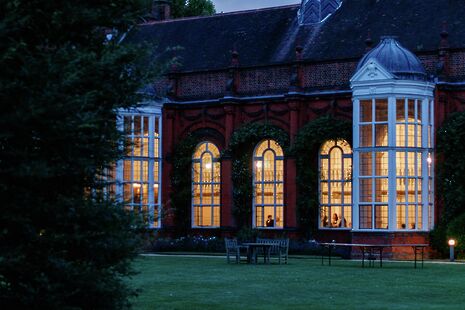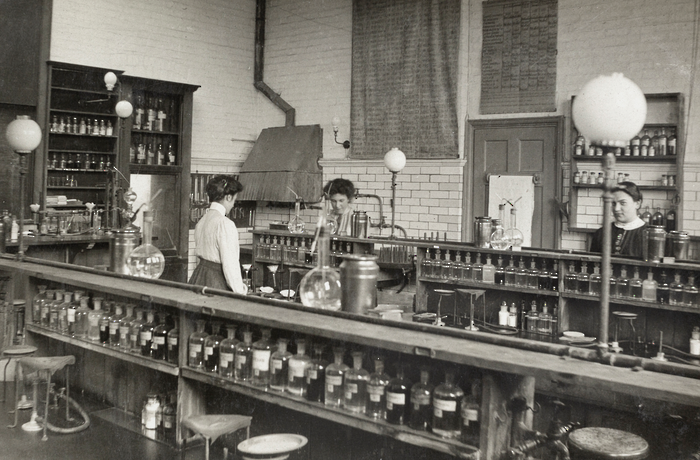As a woman in science, Newnham has given me newfound confidence
I hope for a day when male teachers don’t tell their students, “you’ll go far in physics, because you’re a girl” — as mine told me, writes Charlotte Zemmel

Everyone always feels more confident around people like them. The first thing we do at a party is scan the room for our friends, colleagues or at least a crowd of people who are also awkwardly looking for other awkward people. However, for me, searching around a lecture hall, lab or office for other women in my position has become central to my own personal validation.
Studying at a womens’ college has meant that I do not have to undergo these gender calculations at every supervision or DoS meeting, and as I reflect on my first two years of Cambridge life, I am astonished by my personal confidence growth. Whilst single sex education in certainly becoming out of vogue, and for mostly good reasons too, I cannot help but wonder about the benefits of higher education with single sex elements in moderation.
Juxtaposing my Newnham experience of course mates, DoSes and supervisors who are all women or non-binary people with my high school experience of being the only girl in all of my physics and further maths classes – teachers included – gives me a unique insight into what a difference being surrounded by high powered women makes. While the problem of gender diversity in the STEM subjects arises from a complicated tapestry of societal blockades, I truly believe one part of the key to translating my experience to other women and minorities in the sciences is to surround undergraduates with diverse, highly successful people like themselves.
As I reflect on my first two years of Cambridge life, I am astonished by my personal growth
While this ‘affirmative action’ type theory has been well understood for a while by university boards such as in the USA, a single sex education or institution is another tangible way of pumping academia full of confident and bright women, without losing focus on academic success. If universities want to change their statistics on women and minorities in the sciences, they must start at the undergraduate level by funding a wide range of science societies, talks and events, targeted towards these groups, hire lecturers from diverse backgrounds and support existing minority staff.
It seems to be that main problem today regarding the lack of gender diversity in scientific academia is not getting undergraduates into universities, but in keeping them there. This is a common concept known as the ‘Leaky Pipeline effect’. The numbers of women drop off almost exponentially through graduate and post graduate. Whilst the cause of this trend is the result of a multitude of factors including the abysmal maternity leave granted to PhD and postdoc students and the financial burden of obtaining higher education qualifications, I believe that generating environments where women and minorities can be surrounded by high powered members of their own communities will change these numbers.
Having undergraduates taught exclusively by women who have succeeded academically despite the above factors can only have positive effects on the prognosis of women in the sciences. More importantly, having prominent academics from minority backgrounds will generate the critical mass of voices for systematic change in the set up of academic life, which is biased against both women and people of colour succeeding. This evokes similar arguments from the wider economic problem of the gender and BME pay gaps.
Women-only environments have been shown to catalyse gender equality in fields where women remain underrepresented or overlooked. From my experience, it is not only innate ability but also confidence which allows girls to maximise their potential.
Perhaps now it is time to encourage the teaching of women by women
Surrounding undergraduates with role models and colleagues that have achieved their goals or have similar aspirations in the same social circumstances has a profound effect on the confidence of young people. It allows them to think their goals are in reach. Suddenly, you didn’t get nominated for an opportunity “because you’re a girl” or “because we need more people like you in this field”, but because you competed against people like you and you won fair and square.
Starting a scientific career with supervisors, supervision partners, lecturers and college course mates who look like them creates an environment whereby young women will be less susceptible to internalizing sexism regarding women in the sciences because their own experience proves all kinds of women can and do succeed academically. Ultimately, undergraduates will be better able to focus on academic achievement based on ability, and not constantly have to feel as if they are the designated diversity provider.
Newnham as an institution has a long history of paving the way for women in science. These women range from familiar names like Rosalind Franklin, namesakes of Newnham buildings such as Dorothy Garrod, to scores of under-recognised researchers working alongside male scientists across the University from the 1880s onwards. Perhaps now it is time to encourage the teaching of women by women, not from a position of necessity from sexist exclusion but rather from one of celebration and pride.
I hope for a day where I don’t have to scan a room for other women in order to convince myself I am not just a quota-filler. More importantly, I hope future undergraduates don’t even have to think “am I good enough to be here?” in any situation. I hope for a day when male physics teachers don’t say “you’ll go far in physics, because you’re a girl” — yes, this happened to me — and I think that day will come sooner if we show undergraduates that women can and do thrive at the top of the academic ladder.
 Comment / Plastic pubs: the problem with Cambridge alehouses 5 January 2026
Comment / Plastic pubs: the problem with Cambridge alehouses 5 January 2026 News / Cambridge academics stand out in King’s 2026 Honours List2 January 2026
News / Cambridge academics stand out in King’s 2026 Honours List2 January 2026 News / Cambridge businesses concerned infrastructure delays will hurt growth5 January 2026
News / Cambridge businesses concerned infrastructure delays will hurt growth5 January 2026 News / AstraZeneca sues for £32 million over faulty construction at Cambridge Campus31 December 2025
News / AstraZeneca sues for £32 million over faulty construction at Cambridge Campus31 December 2025 Interviews / You don’t need to peak at Cambridge, says Robin Harding31 December 2025
Interviews / You don’t need to peak at Cambridge, says Robin Harding31 December 2025









